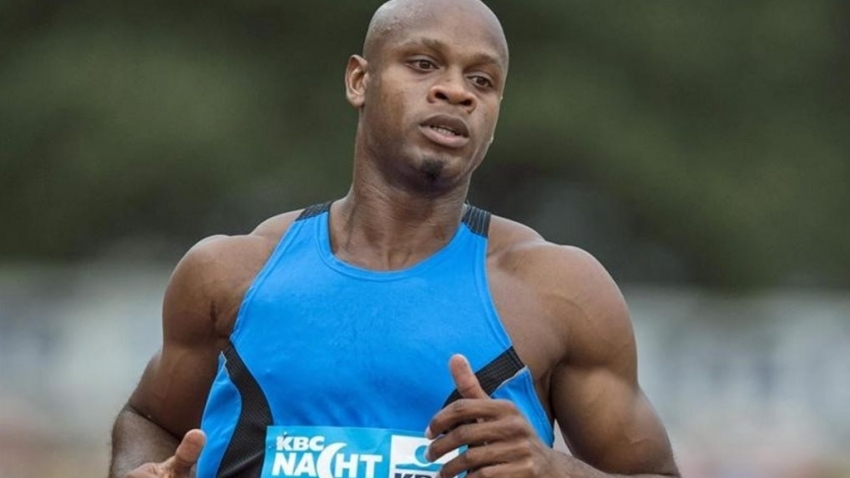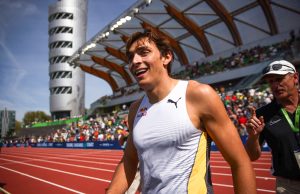By Noel 'Bravo' Francis, Special to TrackAlerts.Com
They provide us with lots of entertainment, pride, joy and sometimes a few dollars; however, there is another side to the glitz and glamour often displayed on the track by our favourite athletes. Many of them go through countless sacrifices in training and everyday life hoping to benefit from personal milestones and ultimately financially. Track and field requires long hours of hard work with no guarantee for success at the highest level. The sport attracts and caters to thousands of athletes yearly and like football never goes into recession.
The shelf life of an athlete varies between five and ten years and if they are lucky, successful and determine like Merlene Ottey, Edwin Moses, Veronica Campbell-Brown, Allyson Felix, Asafa Powell, Aleen Bailey, Kim Collins and Usain Bolt then they might have prolong careers. When I mention luck, I am speaking about an athlete having the right team around them. This includes a great coach, manager, agent, mentor, publicist, trustworthy masseuse, and nutritionist, doctors, pharmacist, sponsors, family and support groups. All these individuals must be persons of integrity. Secondly, an athlete’s success rate and appeal plays an integral role in getting invitations to meets all over the globe. Only a few athletes with World and Olympic titles and some with world records can command the largest appearance fees, however, others are rewarded for their consistency by being invited regularly to compete on the Grand Prix circuit. A lot of athletes based on their limited talent have given up on becoming World or Olympic champions, however, they have settled for being considered professional circuit runners. They will tell you that being current pays the bills and maintains their lifestyle.
This is where it gets a little dicey for a professional athlete. An athlete has to maintain his/her livelihood by ensuring that they can compete at the highest level for a sustained period of time by pushing their bodies to the limit. Unfortunately, injuries, aging and other elements can frustrate and possibly bring a premature end to athlete’s career. A number of talented athletes who believe they have not fulfilled their potential are oftentimes faced with the dilemma of continuing or calling time on their careers. It is one of the most difficult decisions for some athletes who love and enjoy what they do and who may find life outside of athletics a difficult transition.
The earning capacity of some athletes during their peak years is another factor driving them to maximise those opportunities that may dry up when they decide to hang up their spikes. This leads to the important question in the life of any track athlete, when is the right time to quit? Age is just a number and not necessarily a requirement for retirement. In the last two months (April & May) we have seen two highly respected athletes announcing their retirement from the sport. The two athletes are former record holder and Olympic champion at 110m hurdles, Liu Xiang (31), of China and two-time Olympic champion and multiple World Championships gold medallist at long distance events, Haile Gebrselassie (42) of Ethiopia. Lauryn Williams (31), the 2005 World Champion at 100m from the United States retired in 2013.
World and Olympic Champion, Usain Bolt (28) has announced that he will retire from athletics in 2017 by that time he will be 31 years old. Most athletes know when it is time, that is, when that desire, motivation and energy is replaced by emptiness, pain and frustration. Additionally, the body begins to show signs of wear and tear prompting the athletes to take heed. The heart is always willing but the body is deteriorating. Sometimes the decision is made easier when the athletes realize that they are spending too much of their earnings on rehabilitation. Another indication that things are grinding to a halt is when those faithful sponsors or shoe companies do not renew an athlete’s contract.
A number of athletes facing that reality will have inner battles caused by an uncertain future. Some athletes will invest wisely securing their future up to a point, others might not have that luxury and be so fortunate.
So the next time you sit on your couch or hanging out at your favourite spot and watching a track meet, before criticising an athlete, just imagine for a moment what personal suffering they have to go through to reach the top. They are not machines but regular people like you and me with similar needs and responsibilities. Let us appreciate them and not say or do things which may force them out of the sport too early.
Interestingly, some athletes whom many persons thought would retire by now are still going strong in 2015; the list includes Bernard Lagat (40), Kim Collins (39), Felix Sanchez (37), Chris Brown (36), Carmelita Jeter (35), Aleen Bailey (34), Bershawn Jackson (32), Lashinda Demus (32) and Jeremy Wariner (31).
Let us enjoy their performances while it lasts, because retirement in track & field is permanent unlike boxing.
About the Author:
Noel ‘Bravo’ Francis is a very exciting and creative freelance sports writer specializing in the fields of athletics and cricket. His colourful down to earth yet professional personality makes him a favourite amongst athletes and fans. Readers are often exposed to his detailed knowledge and passion which usually increase their interest in the athletes, events and the sport overall. He has a first degree in Banking & Finance and works in the financial industry. Contact Noel at [email protected]











